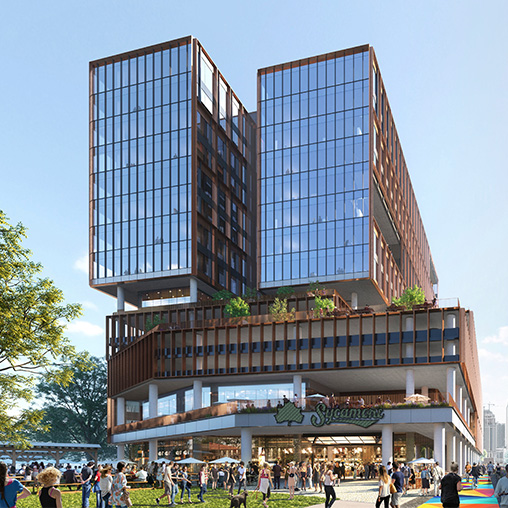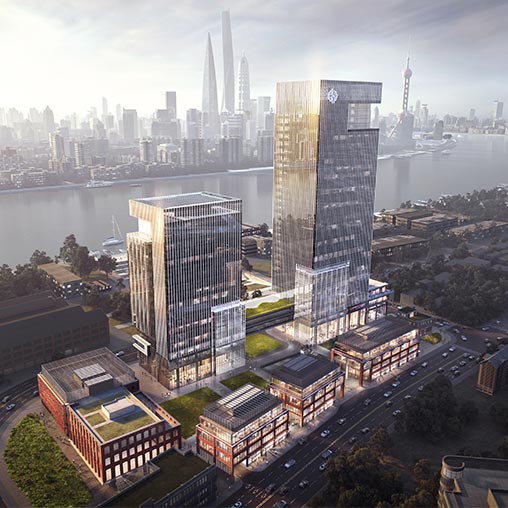Office Developers

CapitaSky

NVIDIA

1229 W Concord Place

The Goodsyard

2222 Market

Hatsudai Center Building

Epic Tower Shin Yokohama

Herald Examiner Building

Capital One McLean Block A

Ideal Tower

Centro West Block Office Building

YOFC Headquarters

The Line Charlotte

Springdale Green

Under Armour Global Headquarters

Zhangjiang Twin Towers

Burlingame Point

CCCC Riverside Plaza

Ryan Tower

Xiamen CGDG New Era Plaza

Millenia, Think Campus

Bandwidth Global Headquarters

Dalian International Shipping Center

3151 Market Street

400 Channelside

The Central Park

Gateway

The Building as Brand: A Watershed Opportunity in Manhattan Office

Bandwidth Headquarters: A Workplace Designed Not Just for Work, But Life

What’s Next for the Workplaces of San Francisco?

What Are Corporate Real Estate Executives Planning for 2025?

Shared Futures: Corporate Real Estate Executives’ Strategies for 2025

Why Quality in Commercial Office Space Hinges on Workplace Experience

A Field Guide to Authentic Amenities

10 Workplace Trends for 2025: What’s In and What’s Out?

The Perpetual Asset: Design for an Evolving Market

The Shift to Extremes: Rethinking Office Design

How to Create a Multigenerational Workplace

Want a High-Performing Workplace? Here’s What Matters Most.

The Key to a Better Workplace? Understanding How and Where People Work Today

A Well-Designed Workplace Is a Competitive Advantage

Revolutionizing Child Care: The Key to Enhancing Your Return-to-Office Strategy
Demand surges for Class A buildings offering a distinctive experience.
As demand for high-quality buildings continues, developers can create new types of compelling tenant experiences using architectural expression, materials, and the embrace of public spaces.
Outside-the-office amenities and round-the-clock neighborhood vibrancy add value.
Tenants are increasingly looking at the street-level environment and neighborhood mix as part of their workplace amenities. Office developers will have a competitive advantage if they can orchestrate relationships with surrounding retail, restaurants, community spaces, and more.
Perpetual and flexible assets improve value over time.
The next generation of office buildings will be built to adapt to multiple uses, extending a building’s lifespan and reducing its embodied and operational carbon. A key feature of a perpetual asset is a flexible floorplate with uniform dimensions, good daylight reach, and a generous structural grid.


Darrel Fullbright

Duncan Lyons

Kristopher Stuart

Gensler Completes the Sixth and Guadalupe Skyscraper, Austin’s Tallest Building

Plano’s Legacy West development, Ryan Tower, Designed by Gensler, Is Ready to Welcome Tenants

Business Insider Rounded Up the Coolest Tech Offices of 2024, Featuring NVIDIA’s “Futuristic Headquarters”

Top Projects That Will Reshape Seattle, Including Gensler Seattle’s KANON Project

The Gensler-Designed YOFC Headquarters in Wuhan Is a “High-Tech Beacon”

Gensler’s Global Workplace Survey 2024 Shows the Impact of Office Collaboration

The Gensler-Designed Sixth and Guadalupe Skyscraper in Austin is Nearing Completion

Capital One McLean Block A Wins Interior Design’s 2023 Best of Year Award

Gensler Developer Leader Darrel Fullbright Discusses Building “Perpetual Assets”

Ryan Tower Is One of the Largest Office Projects Under Construction in North Texas

Gensler Ranked #1 on Building Design+Construction’s Top 200 Office Building Architecture Firms

Gensler’s Design of CCCC Riverside Plaza is “A Work-Learn-Play-Culture Destination of Tomorrow”

The Lighthouse Wins the 2023 AIA California Design Awards in the Climate Action Category

Chicago Science Lab Features Biophilic Design Principles and Hospitality-Inspired Amenities

Gensler’s Design of Shanghai Tower is “China’s Pinnacle of Modern Architecture and Innovation”
